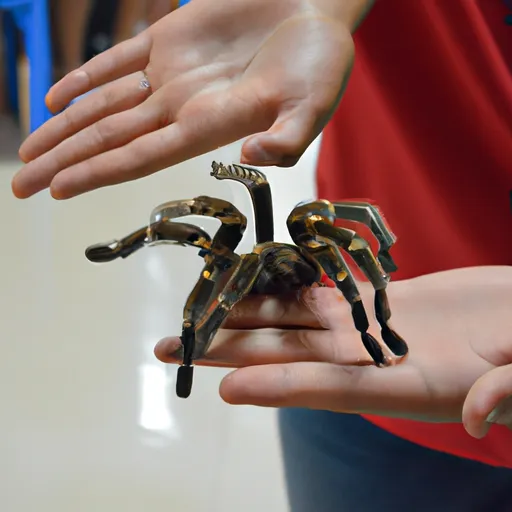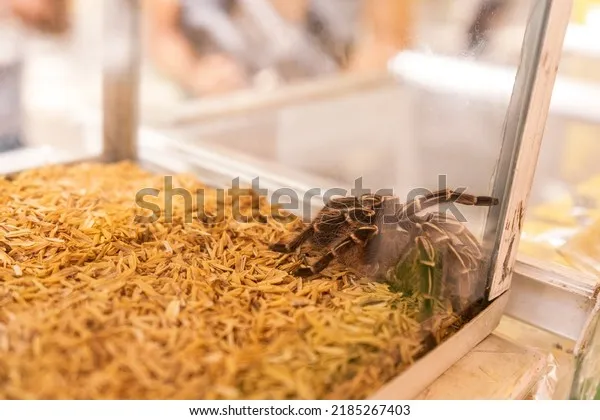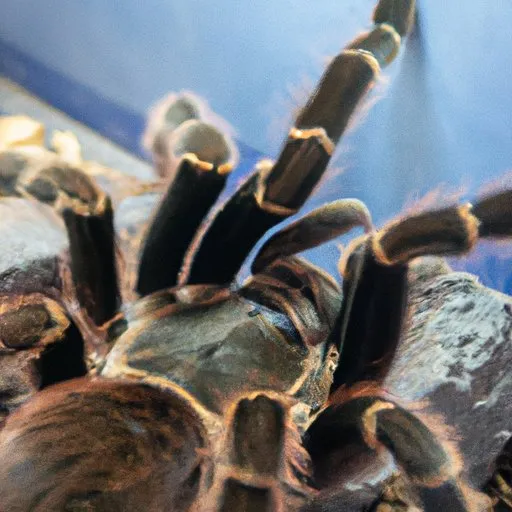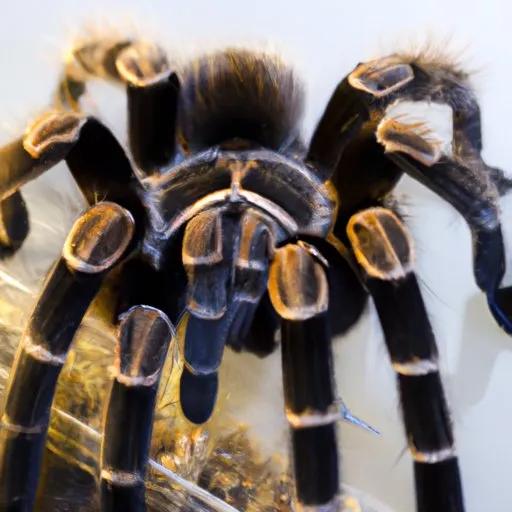Understanding Tarantula Tank Size Importance
Choosing the right tank size for your tarantula is crucial for its health and well-being. A properly sized enclosure provides ample space for movement, hunting, and burrowing, mimicking the tarantula’s natural habitat. Conversely, an inadequate enclosure can lead to a variety of problems, including stress, difficulty molting, and a shortened lifespan. Understanding the factors that influence tank size is the first step in providing your tarantula with a comfortable and enriching environment. This guide will help you navigate the complexities of tarantula tank sizes.
Why Tank Size Matters for Tarantulas
The size of a tarantula’s enclosure plays a significant role in its overall health and happiness. Tarantulas are not like many other pets and require specific environmental conditions to thrive. A too-small tank can be detrimental in several ways. The space may be cramped, limiting the tarantula’s ability to move freely, which is essential for exercise and natural behaviors. It can also lead to a buildup of waste and humidity, increasing the risk of bacterial and fungal infections. Providing a suitable tank ensures that your tarantula can live a long and healthy life.
Impact on Tarantula Health and Well-being

A small tank can directly impact a tarantula’s health, leading to various complications. It can impede successful molting, a vital process for tarantula growth, as the tarantula needs enough space to safely shed its exoskeleton. Limited space restricts the tarantula’s ability to regulate its body temperature and can cause stress, which weakens the immune system, making the tarantula more susceptible to diseases. Additionally, overcrowding can lead to cannibalism, especially among juveniles or when keeping multiple tarantulas in the same enclosure. It is imperative to provide an enclosure that facilitates natural behaviors and prevents health issues.
Avoiding Stress and Promoting Natural Behavior
Stress can severely impact a tarantula’s well-being. A cramped enclosure can induce stress, leading to behavioral changes like reduced feeding, inactivity, or defensiveness. A spacious tank allows the tarantula to establish a comfortable territory, burrow, or climb, depending on the species. This encourages natural behaviors, reducing stress levels and promoting a sense of security. A tarantula that feels safe and secure is more likely to display its full range of natural behaviors, enhancing your enjoyment as a pet owner. A well-sized tank promotes a happy, healthy tarantula.
Factors Influencing Tarantula Tank Size
Several factors determine the appropriate tank size for a tarantula. These include the tarantula species, its growth stage, and its specific needs. Different species have different behaviors and require different environments. The size of the tarantula at any given time greatly impacts its tank needs, as spiderlings require far less space than adults. Providing an appropriate environment involves considering these factors to ensure your tarantula’s optimal health and well-being, taking into account its size and natural instincts.
Tarantula Species and Their Size

Different tarantula species have varying sizes and behaviors, which directly influence the recommended tank size. Some species are terrestrial, meaning they live on the ground and require more floor space. Others are arboreal, meaning they live in trees or elevated areas and need more vertical space for climbing. Before acquiring a tarantula, research its specific needs, including its adult size and natural habitat. Knowing the species ensures that you provide an enclosure that meets its specific requirements.
Terrestrial Tarantulas
Terrestrial tarantulas, such as the Chilean Rose Hair or the Mexican Red Knee, typically need more horizontal space to roam and burrow. Their enclosures should be wider than tall, with a substrate depth that allows for burrowing. The length and width of the tank should provide adequate space for the tarantula to move around freely. A good rule of thumb is to provide a tank that is at least twice the tarantula’s leg span in width and length. The height of the enclosure is less critical, but should still allow for proper ventilation and the ability to add substrate.
Arboreal Tarantulas
Arboreal tarantulas, such as the Pinktoe or the Greenbottle Blue, require a taller enclosure to accommodate their climbing habits. These tarantulas often prefer to create webs and live in elevated areas. The height of the tank is more important than the floor space. Provide branches, cork bark, or other climbing structures to mimic their natural environment. The tank should be secure enough to prevent the tarantula from escaping, with a lid that allows proper ventilation, while maintaining a high level of humidity.
Tarantula Growth Stage

A tarantula’s growth stage significantly impacts the appropriate tank size. Spiderlings, juveniles, and adults have different space requirements and environmental needs. It’s essential to adjust the enclosure size as your tarantula grows to ensure it always has adequate space and comfort. Regular monitoring of your tarantula’s size and behavior will help you determine when to upgrade the enclosure. This is a critical aspect of responsible tarantula ownership, ensuring that the pet’s needs are met at every stage of its life.
Spiderling Stage Tank Requirements
Spiderlings, or baby tarantulas, require smaller enclosures to feel secure and thrive. An overly large tank can make them feel exposed and stressed, and make it difficult for them to locate their food. A small deli cup or a similarly sized container with adequate ventilation is often suitable for spiderlings. The container should be escape-proof and have a substrate that allows the spiderling to create a burrow. As the spiderling grows, the enclosure should be gradually increased in size, being mindful of the tarantula’s comfort and safety. Proper care at this stage will greatly impact the tarantula’s health.
Juvenile Stage Tank Requirements
Juvenile tarantulas need a tank that provides more space than spiderlings but isn’t yet as large as what an adult requires. A tank that is approximately three to four times the tarantula’s leg span in width and length is generally appropriate. The height should be sufficient to allow the tarantula to molt safely. Provide a substrate that supports burrowing, a shallow water dish, and a hide or shelter. At this stage, it is important to regularly monitor the tarantula’s growth and be prepared to upgrade the tank as it gets larger, and begins to outgrow its home.
Adult Stage Tank Requirements

Adult tarantulas need the largest enclosure to accommodate their full size and provide them with adequate space for movement and enrichment. The recommended size for adult tarantulas varies by species, but as a general rule, the enclosure should be at least five times the tarantula’s leg span in width and length for terrestrial species. For arboreal species, the height of the tank should be the primary consideration. Provide a deep substrate, a water dish, and plenty of hiding places. Make sure the enclosure is escape-proof and secure.
Tank Dimensions and Recommendations
Determining the right tank size involves more than just guessing; it requires understanding the specific needs of the tarantula. Species, size, and behavior are critical factors. The dimensions should reflect the tarantula’s terrestrial or arboreal nature. It’s better to err on the side of providing more space rather than less. A spacious tank enables a more enriching environment.
Recommended Tank Sizes by Species
The ideal tank size varies considerably depending on the species. Research the specific requirements for your tarantula species. Several online resources provide detailed guidelines for tank dimensions, including recommended widths, lengths, and heights. For example, a Chilean Rose Hair, a terrestrial species, typically needs a tank at least 10 gallons or larger, while an arboreal species like the Pinktoe may do well in a smaller tank, that is tall, like a 5-10 gallon vertical enclosure. Always consider the adult size of the tarantula.
Terrestrial Species Tank Size Guidelines

For terrestrial tarantulas, the tank should be wider than it is tall. A good rule of thumb is to provide a tank that is at least twice the tarantula’s leg span in width and length. The height should be sufficient to allow for a deep substrate layer, which is essential for burrowing species. Ensure that the tank has good ventilation and a secure lid. Popular terrestrial species like the Mexican Red Knee may need tanks of at least 10-20 gallons or more, depending on the size of the individual tarantula.
Arboreal Species Tank Size Guidelines
Arboreal tarantulas require taller enclosures. The primary consideration should be height, as these species prefer to climb and create webs in elevated spaces. A tank that is at least three times the tarantula’s leg span in height is generally recommended. Provide plenty of vertical climbing structures, such as cork bark or branches. Ventilation is especially important in these taller enclosures. Species like the Greenbottle Blue will thrive with plenty of vertical space and secure, well-ventilated enclosures, with a suitable lid to prevent escape.
Tank Features and Considerations
Beyond the dimensions of the tank, several other features and considerations are essential for creating a suitable habitat for your tarantula. These include substrate depth, ventilation, and enclosure security. Providing the right environment ensures the health and happiness of your pet, encouraging natural behaviors and minimizing stress. Thoughtfully designing your tarantula’s home will contribute to a more enriching and comfortable life.
Substrate Depth and Its Significance

The substrate is the bottom layer of the tank and provides a crucial element of a tarantula’s environment. For terrestrial species, a deep layer of substrate is essential for burrowing. The depth of the substrate should allow the tarantula to create tunnels and feel secure. The type of substrate is also important; coco fiber, peat moss, or a mixture of both are popular choices. It’s essential to maintain appropriate humidity levels within the substrate to aid in molting and overall health. The correct substrate depth is essential for burrowing and a stable environment.
Ventilation and Airflow Needs
Proper ventilation is critical for tarantula health, preventing the buildup of excess humidity and the growth of mold and bacteria. Enclosures should have ventilation holes or mesh in the top and sides to allow for adequate airflow. Poor ventilation can lead to respiratory problems and other health issues. Ensure the ventilation is designed to maintain the correct humidity levels for the specific tarantula species. Both too little and too much ventilation can have negative consequences, so a balance must be achieved.
Enclosure Security and Safety
Tarantulas are escape artists; therefore, enclosure security is paramount. The tank lid should fit securely and prevent the tarantula from getting out. Ensure that the lid is weighted down or secured with clips. Check regularly for any gaps or weaknesses that could allow the tarantula to escape. Avoid using any materials that the tarantula could potentially chew through, as this could cause them to escape. Proper security is essential to prevent escapes and possible harm to both the pet and anyone else.
Maintenance and Tank Size Adjustments

Maintaining the right tank size requires ongoing attention, and adjusting the size when necessary. Monitoring your tarantula’s growth is essential to determine when an upgrade is needed. Regular cleaning and maintenance of the enclosure will also keep it a healthy environment. These steps ensure your tarantula enjoys a safe and comfortable environment as it grows and develops.
Monitoring Tarantula Growth
Regularly observe your tarantula to monitor its growth. Note its size, behavior, and any signs of discomfort or stress. As the tarantula grows, its need for space will increase. Observe how it interacts with the existing enclosure. Signs that your tarantula is outgrowing its enclosure include difficulty molting, being unable to fully stretch out, or frequent attempts to escape. These are clear indicators that it is time to upgrade to a larger tank. Keeping detailed records and taking periodic measurements of your tarantula can help you to make informed decisions.
When to Upgrade the Tank
Upgrading the tank is a critical step in tarantula care. If your tarantula is showing signs of being overcrowded, such as the behaviors mentioned previously, it is time to move it to a larger enclosure. Other signs include the tarantula spending most of its time near the top or sides of the tank, or a reduction in activity. The upgrade process should be done carefully, providing a new habitat that meets the tarantula’s needs. This should not be a stressful process for your tarantula. Ensure the new tank has appropriate features and is set up correctly before moving the tarantula.
Cleaning and Maintaining the Enclosure
Regular cleaning and maintenance of the enclosure are vital for tarantula health. Remove any uneaten food, shed exoskeletons, and waste regularly. Spot clean the substrate as needed. Replace the substrate entirely at least once a year, or more frequently if necessary. Ensure that the water dish is clean and always filled with fresh water. Avoid using harsh chemicals when cleaning, as these can harm the tarantula. Proper maintenance creates a healthy, enriching environment.
In conclusion, providing the correct tank size for your tarantula is an essential aspect of responsible pet ownership. By considering the species, growth stage, and specific needs of your tarantula, you can create a habitat that promotes its health, happiness, and longevity. Regular monitoring, maintenance, and tank adjustments are crucial for ensuring your tarantula thrives. Remember, a well-sized and maintained enclosure provides your tarantula with everything it needs to live a long and fulfilling life. By following these guidelines, you are on your way to becoming a successful tarantula owner.
